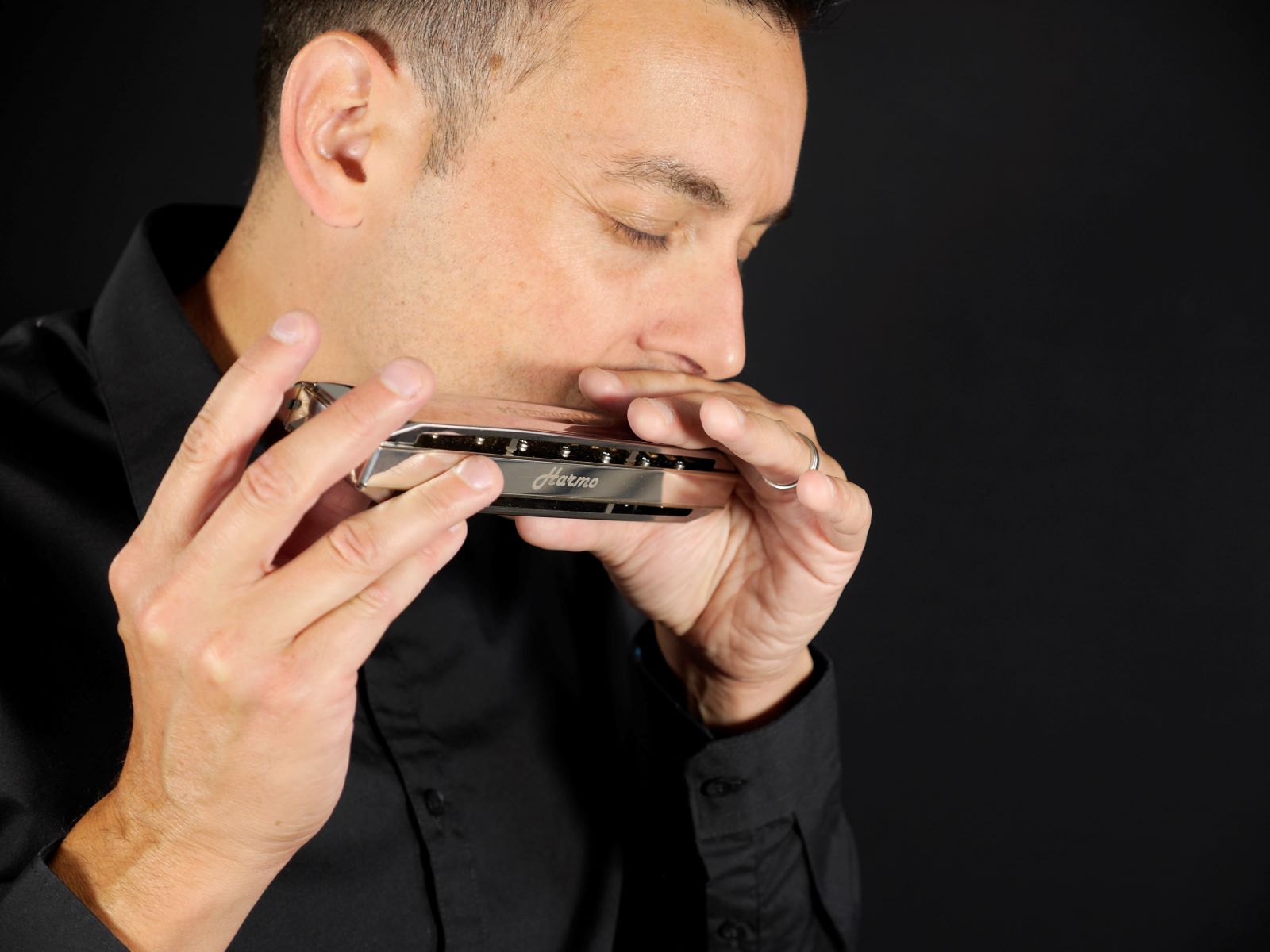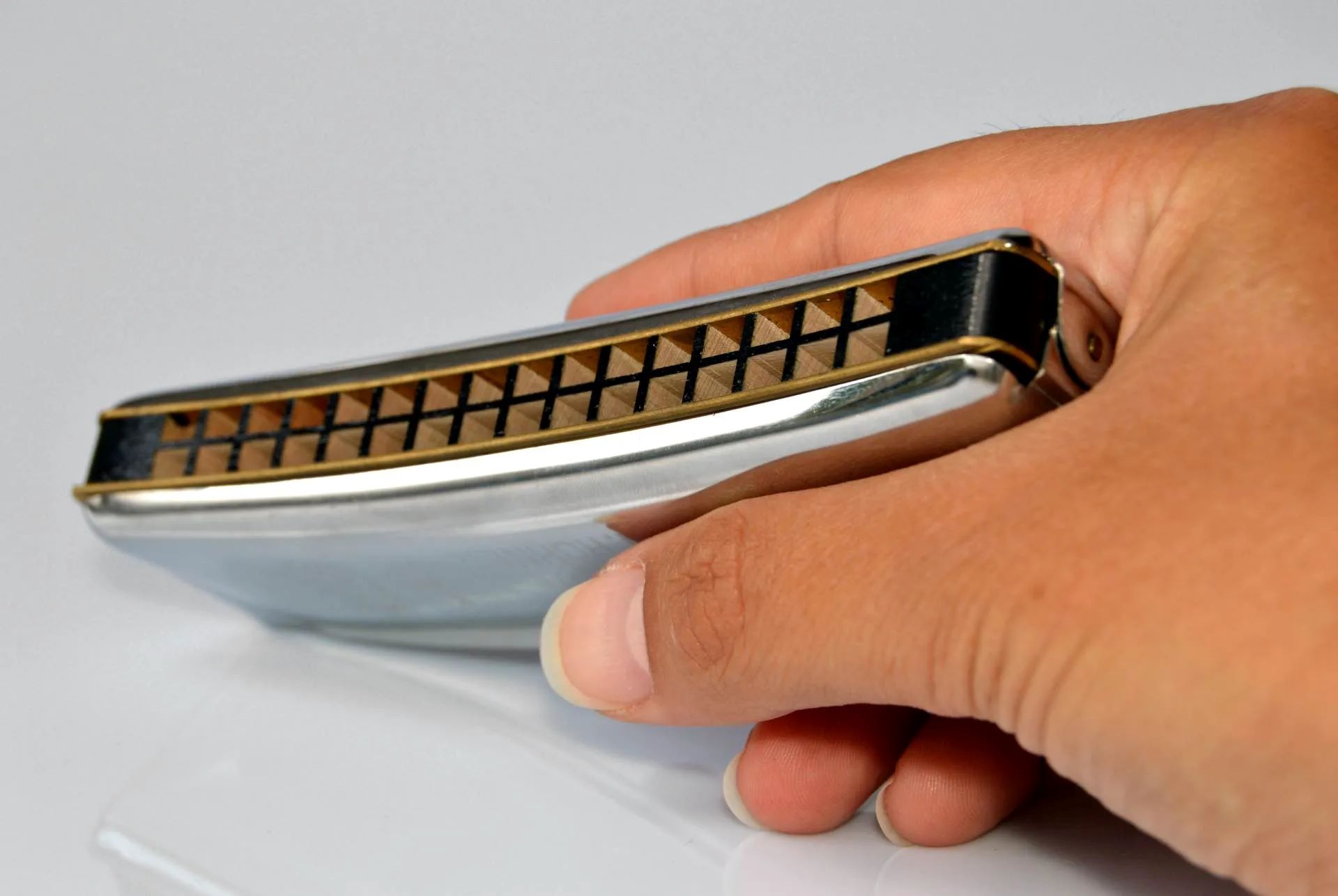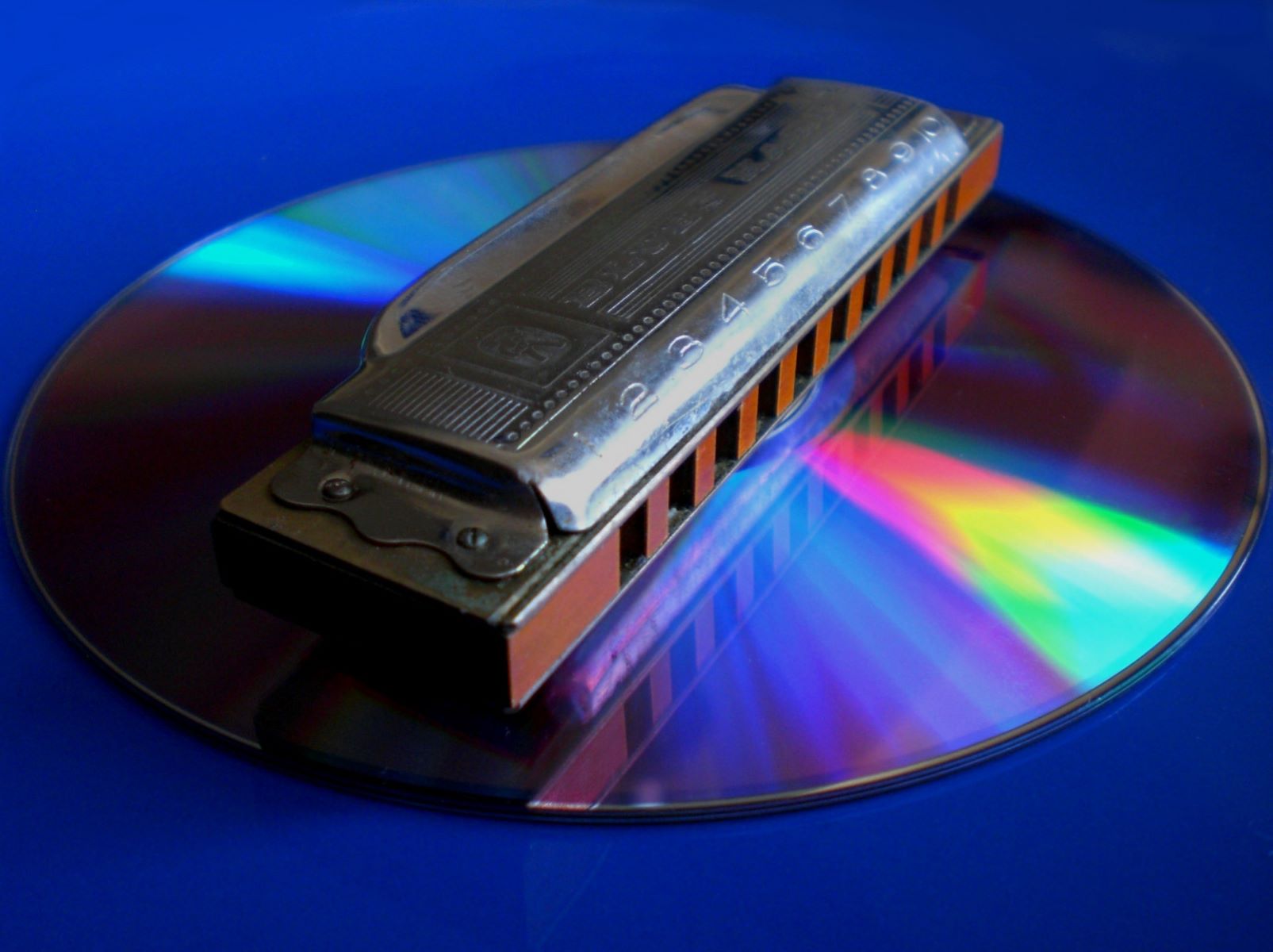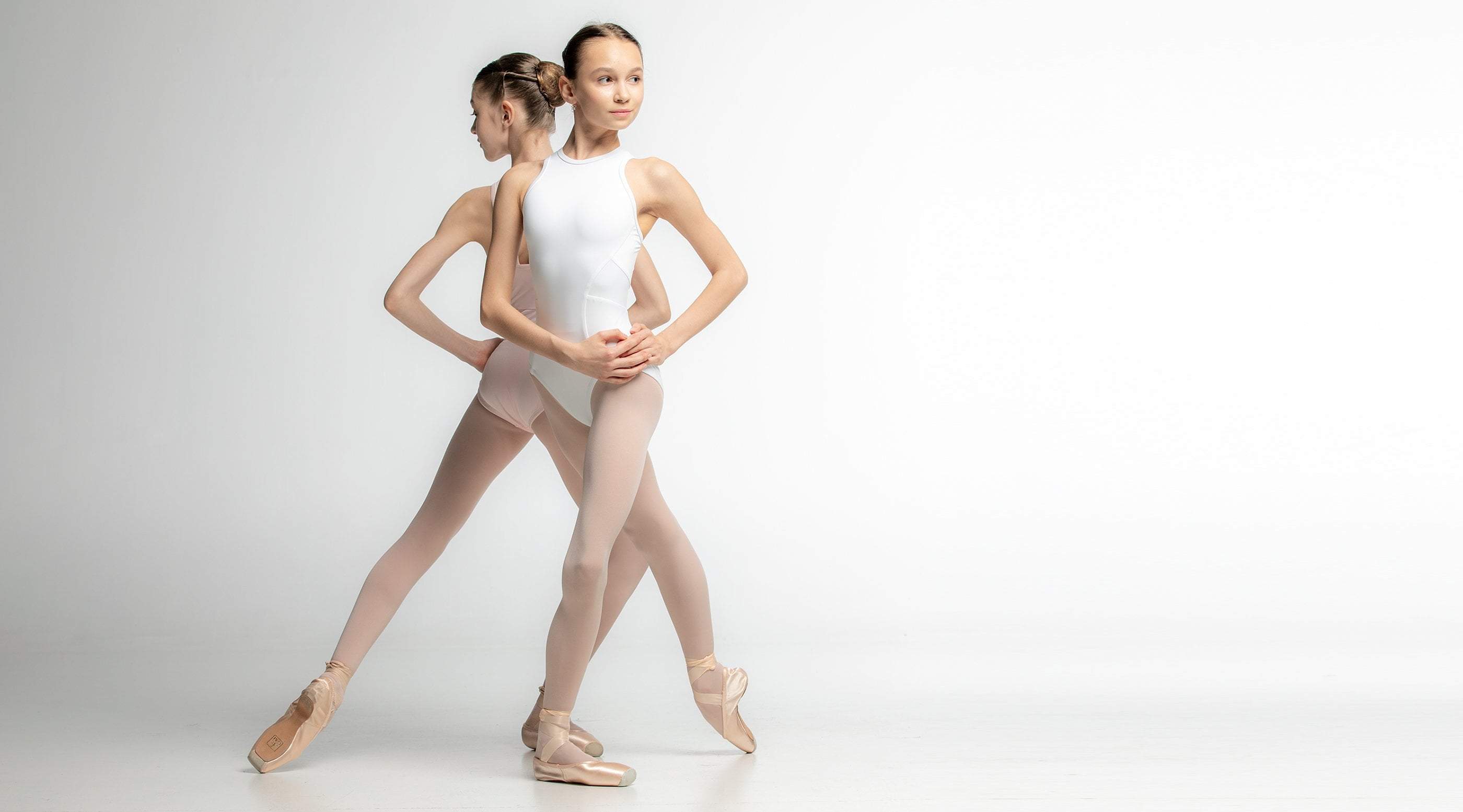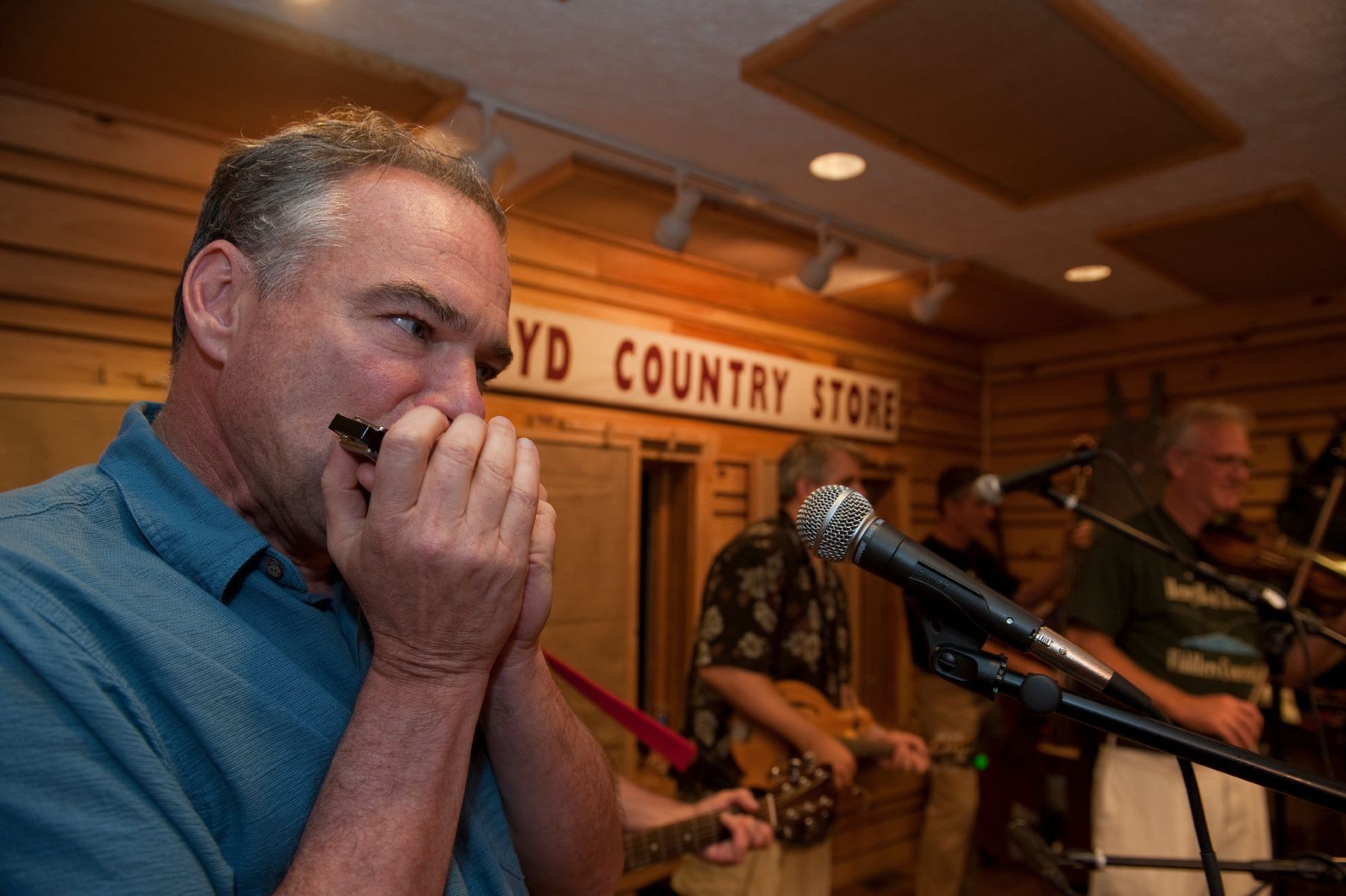Home>Instruments>Harmonica>How Many Holes In A Harmonica
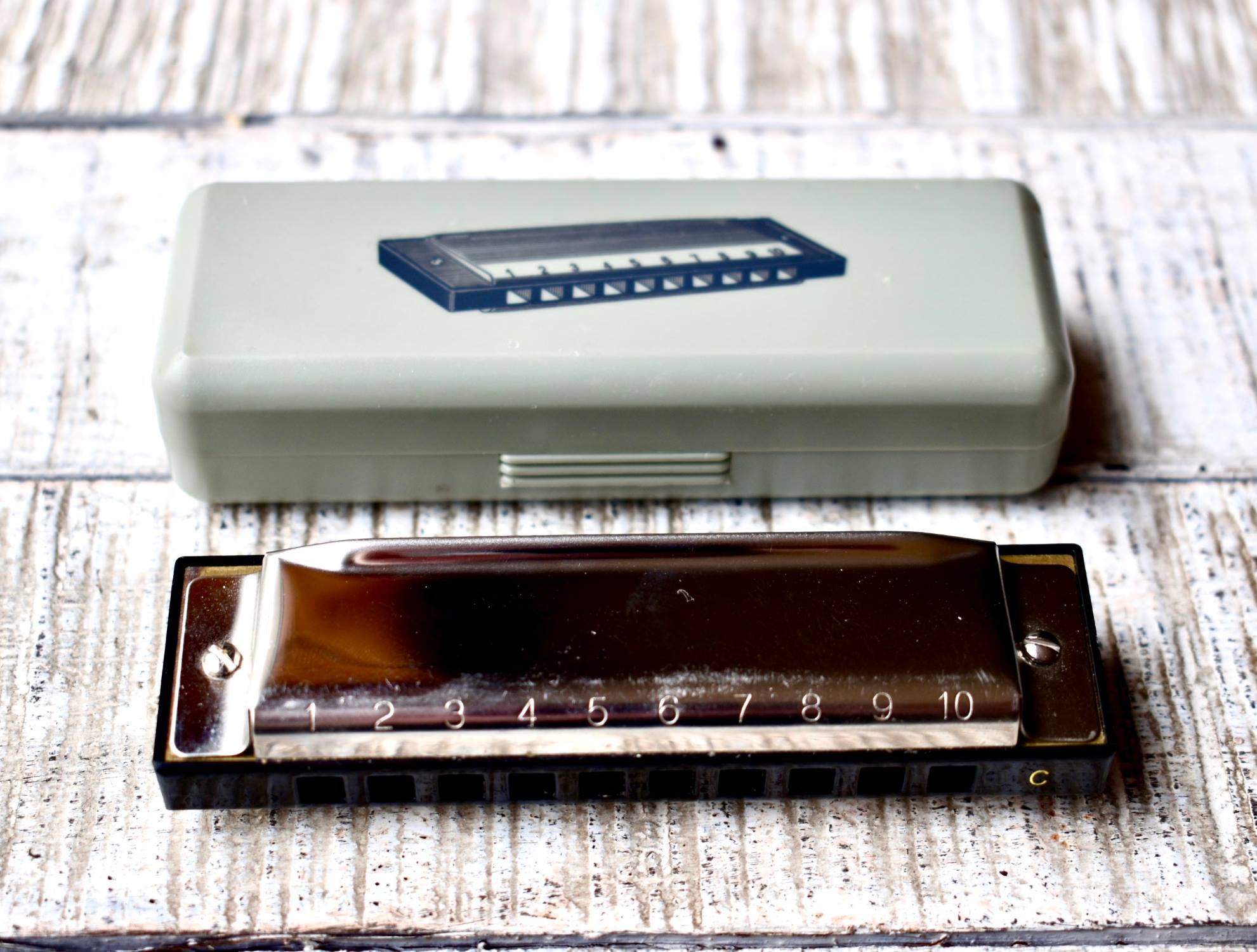

Harmonica
How Many Holes In A Harmonica
Published: February 3, 2024
Discover the fascinating world of harmonicas and learn the answer to the question, "How many holes in a harmonica?" Explore the history, techniques, and types of this beloved musical instrument.
(Many of the links in this article redirect to a specific reviewed product. Your purchase of these products through affiliate links helps to generate commission for AudioLover.com, at no extra cost. Learn more)
Table of Contents
Introduction
The harmonica is a small, versatile musical instrument that has been capturing the hearts of music lovers for centuries. Its distinctive sound and portability make it a favorite among musicians of various genres, from blues and folk to rock and country. But have you ever wondered exactly how many holes there are in a harmonica? In this article, we will delve into the fascinating world of the harmonica and explore its anatomy, playing techniques, and debunk some common myths surrounding the number of holes it possesses.
Before we dive into the details, let’s first understand what a harmonica is. Also known as a mouth organ or harp, a harmonica is a wind instrument that produces sound by blowing or drawing air through reeds attached to multiple holes. It consists of a comb, which is the main body that houses the reed plates and holes, and cover plates that protect the reeds.
The harmonica is a unique instrument due to its compact and portable design. It can easily fit into a pocket, making it a popular choice for musicians on the go. Despite its small size, the harmonica is capable of producing a wide range of tones and emotions, earning its reputation as a powerful and expressive instrument.
Now, let’s explore the anatomy of a harmonica to gain a better understanding of its construction and functionality.
As mentioned earlier, the harmonica consists of a comb and cover plates. The comb is typically made of plastic, wood, or metal and serves as the main body of the instrument. It houses the reed plates, which are thin strips of metal that contain multiple reeds. These reeds vibrate and create sound when air is blown over or drawn through them.
The number of reed plates in a harmonica varies depending on the type and design. Most harmonicas have two reed plates—one for blowing and one for drawing air. Each reed plate contains multiple reeds, usually one for each hole, which is responsible for producing a specific pitch or note.
Now that we have a basic understanding of the harmonica’s anatomy, let’s address the burning question: how many holes does a harmonica actually have? Stay tuned as we dive deeper into this topic and explore the different types of harmonicas and their hole configurations.
What is a harmonica?
The harmonica, also known as a mouth organ or harp, is a versatile musical instrument that belongs to the wind family. It is played by blowing or drawing air through reeds attached to multiple holes. The resulting sound is created by the vibration of these reeds, producing distinct notes and tones.
Harmonicas come in various shapes and sizes, but they all consist of a comb and cover plates. The comb is the main body of the instrument, typically made of plastic, wood, or metal, and houses the reed plates. The cover plates, usually made of metal, protect the reeds and add resonance to the sound.
The harmonica’s portability and unique sound have contributed to its popularity in numerous musical genres. It is particularly beloved in blues, folk, country, and rock music. Harmonicas are also widely used for solo performances, accompaniment, and even as a tool for therapeutic purposes.
One of the defining features of the harmonica is its ability to produce both single notes and chords. This is achieved by directing the airflow to specific holes, either by blowing or drawing breath through the instrument. By manipulating the position of the mouth and tongue, players can create a wide range of musical expressions.
Additionally, the harmonica is a diatonic instrument, meaning it is designed to play in specific keys. Each harmonica is tuned to a specific key, such as C, G, or D, which determines the available notes and scales. However, skilled players can bend notes and create additional tonal variations, expanding the musical possibilities even further.
Playing the harmonica requires a combination of breath control, tongue techniques, and mastery of the instrument’s layout. Players must learn how to articulate individual notes, perform expressive bends and vibrato, and execute chords seamlessly. With practice and dedication, musicians can unlock the full potential of the harmonica and create captivating melodies.
Whether you’re a beginner exploring the world of music or an experienced musician looking to expand your repertoire, the harmonica offers a rewarding and enjoyable journey. Its compact size, versatility, and unique sound make it a timeless instrument that continues to captivate audiences worldwide.
Anatomy of a harmonica
To better understand how a harmonica works, it’s essential to familiarize ourselves with its anatomy. A harmonica consists of several key components that contribute to its distinctive sound and functionality.
The comb is the main body of the harmonica and is typically made of plastic, wood, or metal. It is divided into chambers, each containing a set of reed plates. The reed plates are thin strips of metal that are affixed to the comb. These reed plates house the individual reeds, which are responsible for producing sound when air is blown or drawn through them.
The cover plates, usually made of metal, serve two purposes. Firstly, they protect the reed plates and the delicate reeds from damage, dust, and moisture. Secondly, they help direct the airflow over the reeds, amplifying and shaping the sound that the harmonica produces. The cover plates are often adorned with decorative engravings, giving each harmonica its unique visual appeal.
Located on the cover plates are the holes, also known as chambers or channels, from which the sound is produced. These holes are aligned in a row and correspond to the individual reeds. In most common harmonicas, there are ten holes arranged in a linear fashion, although there are variations in the number of holes depending on the type of harmonica.
Each hole in the harmonica has a reed that is responsible for producing a specific pitch or note. When air passes over or through a reed, it vibrates, creating the desired sound. By manipulating their breath and tongue position, players can control the airflow into specific holes and produce different notes or chords.
Besides the holes and reed plates, there are other elements that contribute to the harmonica’s functionality. The windsavers, made of thin strips of material, are attached to the reeds to control airflow and prevent cross-vibration between neighboring reeds. This helps to ensure that only the intended reed produces sound when played.
The mouthpiece, located at one end of the harmonica, is where the player places their lips to blow or draw air. It has an opening through which the air flows into the instrument to activate the reeds. At the opposite end is the cover plate, which encloses the harmonica and protects the reed plates and reeds.
Overall, the anatomy of a harmonica is a carefully crafted design that allows players to produce a wide range of musical tones and melodies. Every component, from the comb to the reed plates, works harmoniously together to create the unmistakable sound that has made the harmonica an iconic instrument in the world of music.
How many holes does a harmonica have?
The number of holes in a harmonica may vary depending on its type and design. However, the most common type of harmonica, known as the diatonic harmonica, typically has ten holes. Each hole is aligned in a linear configuration and corresponds to a specific reed that produces a particular pitch or note when played.
These ten holes are divided into two rows, with each row containing five holes. The vertical layout allows players to easily access and control each hole with their mouth and tongue. By blowing or drawing breath through specific holes, different notes are produced, enabling the player to create melodies and chords.
Although ten holes is the standard for diatonic harmonicas, there are other types of harmonicas that may have a different number of holes. For instance, chromatic harmonicas, which are more complex and versatile, often have 12, 14, or even 16 holes. These additional holes give musicians access to all the notes of the chromatic scale, including sharps and flats.
The number of holes in a harmonica directly correlates to the range of notes and musical possibilities it can offer. More holes allow for a greater span of notes and increased flexibility in playing melodies and scales. However, more holes also mean a larger and potentially more challenging instrument to navigate.
It’s worth noting that the number of holes is not the only factor that determines the capabilities of a harmonica. The specific key in which the harmonica is tuned also plays a crucial role. Harmonicas can be manufactured in different keys such as C, G, or D, among many others. Each key has a specific set of notes and scales, and players often have multiple harmonicas in different keys to accommodate various musical compositions.
Ultimately, the number of holes in a harmonica depends on the type and purpose of the instrument. Whether it’s a ten-hole diatonic harmonica for playing blues or a larger chromatic harmonica for more complex musical arrangements, each configuration offers unique benefits and diverse musical opportunities for harmonica players.
Types of harmonicas
Harmonicas come in various types, each designed for specific musical genres or playing styles. The choice of harmonica depends on the style of music one wishes to play and the desired range of notes. Here are some common types of harmonicas:
- Diatonic Harmonica: The diatonic harmonica is the most widely recognized type and is often associated with blues, folk, and country music. It typically has ten holes and is tuned to a specific key, such as C or G. Diatonic harmonicas are known for their ability to produce single notes and chord playing, making them versatile for a wide range of musical expressions.
- Chromatic Harmonica: Chromatic harmonicas are more complex instruments that feature a greater number of holes, usually 12, 14, or 16. These harmonicas have a button on the side that allows players to access all the notes of the chromatic scale, including sharps and flats. They are commonly used in jazz, classical, and pop music, and have a wider range of playing options due to their ability to produce all the notes in the Western music scale.
- Tremolo Harmonica: Tremolo harmonicas are notable for their distinctive sound characterized by a warbling, tremolo effect. They have two reeds per hole, tuned slightly apart from each other, which creates a wavering or vibrato-like sound when played. Tremolo harmonicas are often used in traditional folk music and can add a charming, nostalgic quality to melodies.
- Octave Harmonica: Octave harmonicas have two reeds per hole, with one reed an octave higher than the other. This creates a rich and full sound, giving the impression of two harmonicas playing simultaneously. Octave harmonicas are commonly used in jazz and popular music, adding depth and complexity to the music.
- Bass Harmonica: Bass harmonicas are considerably larger than diatonic or chromatic harmonicas and produce deep, resonant bass tones. They often have multiple octaves and are used in ensembles and orchestras to provide a solid foundation in the low-frequency range.
While these are some of the most widely known types of harmonicas, there are also specialized harmonicas like the chord harmonica, which allows players to play full chords, and the orchestral harmonica, designed specifically for use in orchestral compositions.
Choosing the right type of harmonica is crucial for capturing the desired sound and achieving the desired musical expression. It is worth exploring the different types and experimenting with various harmonicas to find the perfect fit for your musical style.
Playing Techniques on a Harmonica
Playing the harmonica is not just about blowing air into the instrument. It requires mastering a variety of playing techniques to unlock its full potential. Here are some common techniques used by harmonica players:
- Single Notes: Playing single notes involves isolating a specific hole and producing a clear, distinct sound. This technique requires precise control of breath and tongue placement to prevent air leakage into neighboring holes.
- Bending Notes: Bending notes is a technique used to lower the pitch of a note by altering the shape of the mouth and altering the airflow. By creating a slight obstruction with the tongue or modifying the mouth cavity, players can produce expressive, bluesy notes that fall between the standard notes on the instrument.
- Vibrato: Vibrato is a technique used to add a subtle oscillation or wavering effect to a sustained note. By slightly varying the air pressure and the shape of the mouth, harmonica players can produce a warm, expressive sound that adds depth and emotion to their playing.
- Tongue Blocking: Tongue blocking involves using the tongue to cover multiple holes simultaneously. This technique allows players to create chords, play octaves, and produce a rich, full sound by blocking multiple holes with the tongue while leaving other holes open for playing single notes.
- Overblowing: Overblowing is a technique used to produce higher notes than those naturally available on the harmonica. By altering the airflow and tongue position, players can achieve additional higher notes beyond the instrument’s standard range.
- Chord Playing: Playing chords on the harmonica involves covering multiple holes simultaneously to produce harmonies. This technique is commonly used in accompaniment, allowing players to provide a rhythmic and harmonically rich backdrop to melodies or other instruments.
- Tongue Slapping: Tongue slapping is a percussive technique where players strike their tongue against the reeds or the back of the harmonica to create rhythmic accents or percussive effects. It adds a unique texture and rhythmic interest to the music.
These are just a few of the many techniques that harmonica players employ to create their distinctive sound. Each technique requires practice, patience, and a deep understanding of the instrument’s capabilities. By mastering these techniques, harmonica players can express their musical ideas, adding soul, emotion, and creativity to their performances.
Common myths about harmonica holes
Like any beloved instrument, the harmonica has its fair share of myths and misconceptions surrounding its design and functionality. Let’s take a look at some of the common myths about harmonica holes and set the record straight:
- More holes make you a better player: It is a common belief that having more holes in a harmonica automatically makes you a better player. While additional holes may provide a wider range of notes, playing the harmonica is more about skill, technique, and creativity rather than the number of holes. A skilled player can create incredible music with even a basic ten-hole harmonica.
- Holes determine the complexity of the music: Another myth suggests that the number of holes in a harmonica determines the complexity of the music that can be played. While it is true that more holes can provide a broader range of notes, the complexity of music lies in the technique, creativity, and musicality of the player. Skilled harmonica players can create intricate melodies and express a wide range of emotions using a diatonic harmonica.
- Each hole on a harmonica represents a different note: While it is true that each hole on a harmonica corresponds to a specific reed that produces a note, the layout of notes on a diatonic harmonica is actually more complex. Depending on the playing technique, players can produce different pitches and variations from each hole using techniques like bending, overblowing, or tongue blocking.
- Playing the harmonica is easy: Many people believe that playing the harmonica is a simple and effortless task. However, like any musical instrument, it requires practice, dedication, and a solid understanding of techniques to play proficiently. Producing clear single notes, bending pitches, and playing complex melodies all require time and effort to master.
- Harmonicas are only for blues music: While the harmonica is strongly associated with blues music, it is a versatile instrument capable of playing various genres. From country and folk to rock and pop, the harmonica has found its place in a wide range of musical styles. Its soulful sound can add depth and character to any musical composition.
By dispelling these myths, we can better appreciate the harmonica and understand that the instrument’s true essence lies in the creativity and skill of the player. With practice and exploration, harmonica players can push the boundaries of what’s possible, creating captivating melodies and leaving their audience amazed.
Conclusion
The harmonica is a fascinating instrument that has captured the hearts of musicians and audiences alike for generations. With its compact size and distinctive sound, it has found a prominent place in various musical genres, from blues and folk to rock and country.
In this article, we explored the anatomy of a harmonica, understanding its components such as the comb, reed plates, cover plates, and holes. We also debunked common myths about harmonica holes, emphasizing that skill, technique, and creativity are more crucial than the number of holes when it comes to playing this instrument proficiently.
We also discussed the different types of harmonicas available, each designed to cater to specific musical genres and playing styles. From the diatonic and chromatic harmonicas to tremolo, octave, and bass harmonicas, each type offers unique capabilities and tonal qualities, catering to the diverse musical preferences of harmonica players.
We delved into various playing techniques, showcasing the skills required to produce single notes, bend pitches, play chords, and employ techniques like vibrato and tongue blocking. Mastering these techniques allows harmonica players to create soulful melodies and express emotions through their music.
Ultimately, the harmonica is a versatile and expressive instrument that knows no boundaries when it comes to musical possibilities. It is important to approach the harmonica with dedication, practice, and a willingness to explore the instrument’s capabilities.
So, whether you’re a beginner just starting to explore the harmonica or an experienced player looking to expand your skills, embrace the harmonica as a gateway to creative expression and musical exploration. Let the sound of this humble instrument carry your melodies and captivate your audience, keeping the harmonica’s rich history and timeless charm alive.

